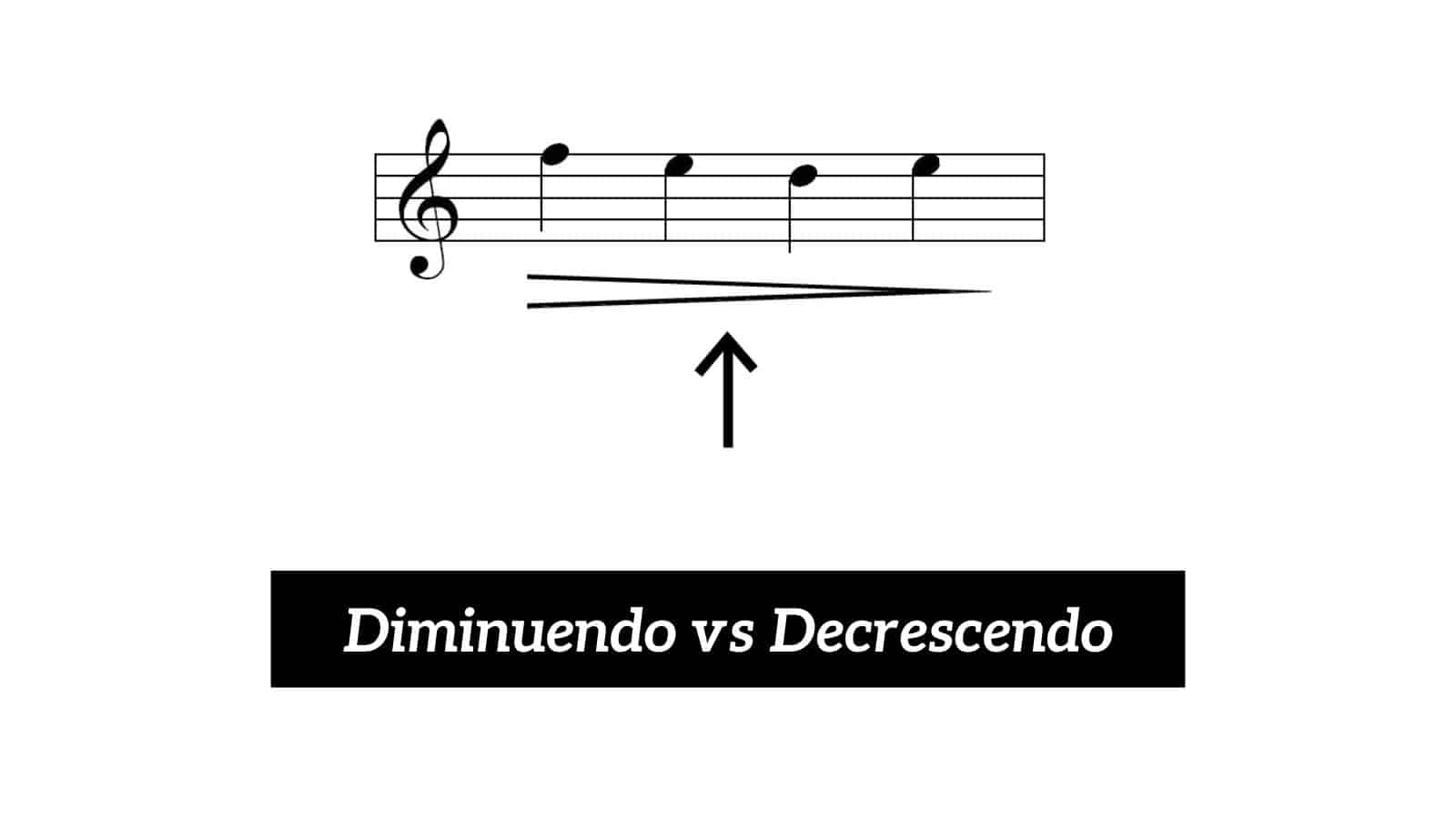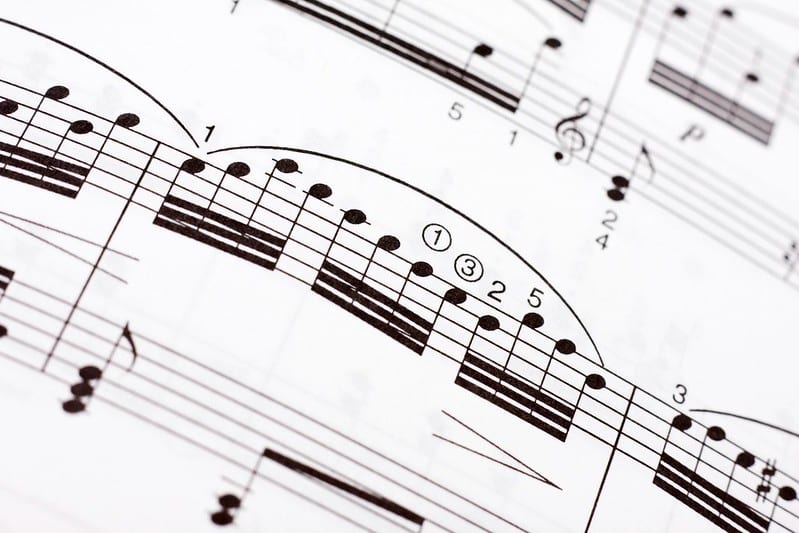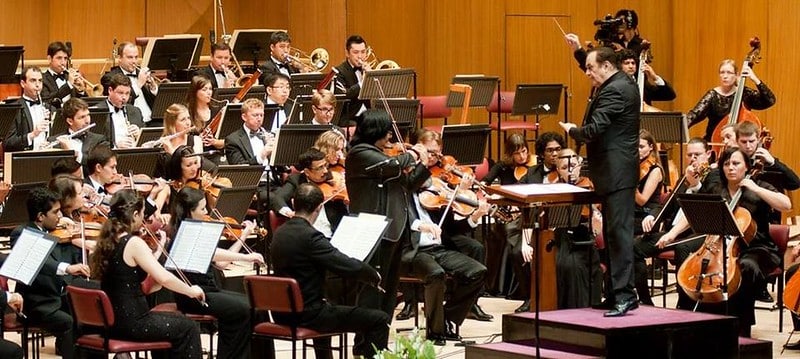
Diminuendo and decrescendo are both common musical terms that have been in use for probably at least three hundred years.
Keep in mind that the terms may have existed far longer than their notation, (the written down versions in scores), and certainly their use in performances must be centuries old.
Both instructions ask a performer to make a volume change. In the case of a diminuendo and a decrescendo, the volume of a passage should decrease.
The first word, diminuendo, is perhaps easier to grasp as if something is diminished it becomes smaller, less than it was before. The same is true when considering a musical performance.
A performer reading the instruction to either decrescendo or diminuendo is going to reduce the volume they are playing or singing at.
On the other side of the dynamic coin, a crescendo is an instruction to increase the volume during a performance. When you place this next to our term decrescendo, you can more easily see how this instruction means the reverse.
Another facet of this discussion is that, in my experience, the diminuendo can be an instruction given in words in a score as can decrescendo, however, only diminuendo has a symbolic representation. (See below)
Composers then often use the symbol to indicate a diminuendo, but more commonly write the word decrescendo rather than using the symbol.
It is of course perfectly possible for a composer to write the above symbol in their score to indicate a decrescendo not a diminuendo; so, is there a difference?
Diminuendo vs Decrescendo
What I think is that sometimes composers may write the word decrescendo to reduce the volume of a passage or phrase following on from a crescendo.
If we remember that the crescendo raises the volume, then perhaps it is a more natural response to write a decrescendo to bring the volume back down to the original level or maybe a softer one.
In performance, it could be argued that this way of notating a rise and fall in volume might suggest to the performer that the alteration in volume is a gentle increase and decrease rather than something more abrupt or extreme.
Adding clear volumes in the score removes the possibility of doubt like a piano, forte, or mezzo-forte. There is speculation however and it will naturally depend on the music being performed and the performer or performers involved.
I have also often seen a diminuendo, for example, written over a considerably longer selection of bars than a decrescendo. To me, this implies a more gradual reduction in volume than perhaps is suggested by the written word decrescendo.
That said, you may also come across the word decrescendo being hyphenated into de-cresc-en-do, and also placed under a longer musical phrase. I find this to be far less common.
There are some accounts of Franz Schubert using these two terms to mean different things but how valid this is open to discussion.
The implication was that Schubert may have intended performers to reduce the performing volume alongside the speed if he wrote a decrescendo in his score. Perhaps a simple diminuendo in Schubert’s music only asks for a change in volume, not tempo?
Here is where the use of these two terms becomes a little blurred. Could composers have different intentions for each of these terms or are there conventions that surround them?
To be sure about any composer’s intentions you have to get to know their music in more detail and do some research.
This can often provide some illumination surrounding many aspects of performance, especially with music from earlier periods of music where conventions may have been different.
It also means, to me at least, getting behind the notes to a deeper understanding of what the composers may have been trying to convey or express.
In real terms, this is a very open-ended exploration which is why there are numerous recordings of well-known pieces of classical music.
Composers did not notate dynamics in their scores until we enter the Baroque period. Giovanni Gabrieli, a celebrated composer of the late Renaissance, is thought to have been one of the first composers to write dynamics in his scores.
These would largely have been mostly piano or forte. It is worth keeping in mind that the keyboard instruments of the Renaissance and Baroque had limited dynamic range, although singers and wind or brass instruments had more options.
Much of the expressive content was left to the performers.
By the time we enter the Classical and especially the Romantic periods then the full gamut of dynamic expression was commonplace including the two terms under discussion.
With these periods of music came a greater complexity and so a greater spectrum of considerations when it came to how to perform a piece of music.
In the music I compose and indeed have composed, I rarely ever use the word decrescendo. Instead, I plump for the more common diminuendo with clear dynamic indications.
I might add an instruction for a subtle change in tempo too, but this is dependent on what I want to hear in that passage of music. As a composer, I feel it is vital to give precise and definite instructions to performers to make their lives easier.
What there will always be, and this in many ways highlights the limitations of notation, is interpretation. This is not a bad thing, but one necessary for the human aspect of a musical performance that encourages performers to perform the music the way they feel it.
No clear winner emerges from this battle of dynamics. Both the diminuendo and the decrescendo are valid indications in music.
They exist in a spirit of peaceful cohabitation, each with its own set of possible interpretations; and that is important. As a performer then consider carefully what the composer has written in their score and how you feel it is best delivered.
As a composer think carefully about what you intend with the notation you use, and as a listener, ask yourself how did the composer notate this passage and is the performance what you expect?



